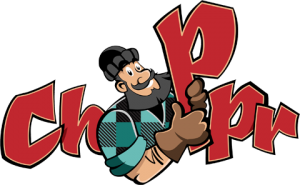on January 14, 2025

Effective collaboration between designers and developers is key to delivering successful projects. However, these two roles often approach tasks with different perspectives, which can lead to misunderstandings or inefficiencies. By implementing the right communication tips for designers, teams can bridge this gap, ensuring smooth workflows and high-quality results.
This guide explores strategies for designers to communicate effectively with developers, fostering collaboration and mutual understanding.
Understanding the Designer-Developer Dynamic
Designers and developers bring unique skills and mindsets to a project.
- Designers: Focus on aesthetics, user experience, and the creative aspects of the project.
- Developers: Concentrate on functionality, technical feasibility, and efficient coding practices.
These differing priorities can create friction if communication is unclear. By recognizing each other’s strengths and challenges, teams can work harmoniously toward shared goals.
Start with a Shared Vision
A project’s success begins with aligning on a clear and shared vision.
Involve Developers Early
Engage developers during the design phase to gather feedback on feasibility. Developers can provide insights into technical limitations and suggest alternatives for complex features.
Clarify Project Goals
Ensure everyone understands the project’s objectives, target audience, and key deliverables. Use tools like Miro for collaborative brainstorming sessions.
Use Clear and Concise Documentation
Documentation serves as the foundation for effective communication in web projects.
Create Design Specifications
Provide detailed design specs that include:
- Spacing and alignment guides.
- Font styles and sizes.
- Color codes and gradients.
Tools like Zeplin simplify the handoff process by generating specs directly from design files.
Maintain a Style Guide
Develop a style guide that outlines reusable components and design standards. This ensures consistency and helps developers understand the design system.
Leverage Collaboration Tools
Collaboration tools bridge the communication gap between designers and developers.
Use Design Handoff Tools
Platforms like Figma or Adobe XD allow developers to inspect layers, download assets, and access CSS code snippets directly from the design file.
Centralize Communication
Keep discussions organized by using project management tools like Asana or communication platforms like Slack. Create dedicated channels for design-developer discussions to streamline communication.
Foster an Open Feedback Loop
Feedback is essential for refining and improving the project.
Encourage Regular Check-Ins
Schedule regular meetings to discuss progress, address concerns, and align on next steps. Use these sessions to resolve misunderstandings early.
Give Constructive Feedback
When providing feedback, be specific and solution-oriented. For example, instead of saying, “This looks off,” say, “The padding here should match the spacing in the header.”
Speak a Common Language
A shared vocabulary reduces miscommunication and aligns designers and developers on technical terms.
Learn Basic Development Concepts
Designers don’t need to code, but understanding basic concepts like responsive design, CSS grids, and browser compatibility helps when discussing implementation with developers.
Simplify Design Jargon
Avoid using overly technical design terms that developers may not be familiar with. Instead, explain concepts in a way that highlights their impact on user experience.
Adapt Designs for Feasibility
Designers can improve collaboration by creating designs that are easy to implement.
Design with Constraints in Mind
Understand the limitations of the platform or framework being used. For example, a WordPress project may have constraints that influence layout or functionality.
Provide Alternatives
Offer flexible design options for elements that may be difficult to code. This gives developers room to adapt without compromising the design’s integrity.
Be Mindful of Deadlines
Clear communication around timelines ensures that both designers and developers can meet deadlines without compromising quality.
Break Tasks into Phases
Divide the project into smaller milestones with realistic timelines. This approach allows teams to focus on achievable goals and avoid last-minute stress.
Set Clear Priorities
Communicate which design elements are must-haves and which can be deprioritized if time becomes a constraint.
Test Designs Together
Collaboration doesn’t end once the design is handed off. Testing ensures that the final product aligns with the original vision.
Conduct Joint QA Sessions
Involve designers during quality assurance testing to verify that the implementation matches the design mockups. Tools like PerfectPixel help compare designs to live websites.
Test Across Devices
Ensure the design looks consistent across different devices and browsers. Use platforms like BrowserStack for cross-browser testing.
Build a Culture of Collaboration
Strong communication goes beyond tools and processes—it’s about fostering a collaborative team environment.
Respect Each Other’s Expertise
Acknowledge the unique skills that designers and developers bring to the table. Encourage mutual respect and a willingness to learn from each other.
Celebrate Successes
Recognize and celebrate milestones, whether it’s completing a challenging feature or delivering a project on time. Positive reinforcement builds camaraderie and strengthens collaboration.
Overcoming Common Communication Challenges
Challenges will arise in any project. Here’s how to address some of the most common issues:
Misaligned Expectations
Solution: Regularly revisit project goals and check for alignment. Use visual tools like Gantt charts to track progress.
Ambiguous Feedback
Solution: Use visual annotations or tools like Markup.io to clarify feedback directly on design files.
Lack of Technical Understanding
Solution: Schedule knowledge-sharing sessions where developers explain technical concepts to designers, and vice versa.
The Role of Technology in Improving Communication
Emerging technologies are making it easier for designers and developers to collaborate effectively.
Real-Time Collaboration
Tools like Figma enable designers and developers to work simultaneously on the same file, reducing delays and improving transparency.
Automated Workflows
CI/CD pipelines can automate parts of the development process, ensuring that design updates are quickly reflected in the implementation. Explore tools like Jenkins for automation.
Conclusion
Effective collaboration between designers and developers hinges on clear communication, mutual respect, and the right tools. By following these communication tips for designers, teams can bridge the gap between creativity and technical execution, resulting in seamless workflows and high-quality outcomes.
Whether you’re using tools like Figma for design handoffs or fostering open feedback loops, prioritizing communication ensures that projects are completed efficiently and to the satisfaction of all stakeholders. Embrace these strategies to create a collaborative environment where both designers and developers thrive.
